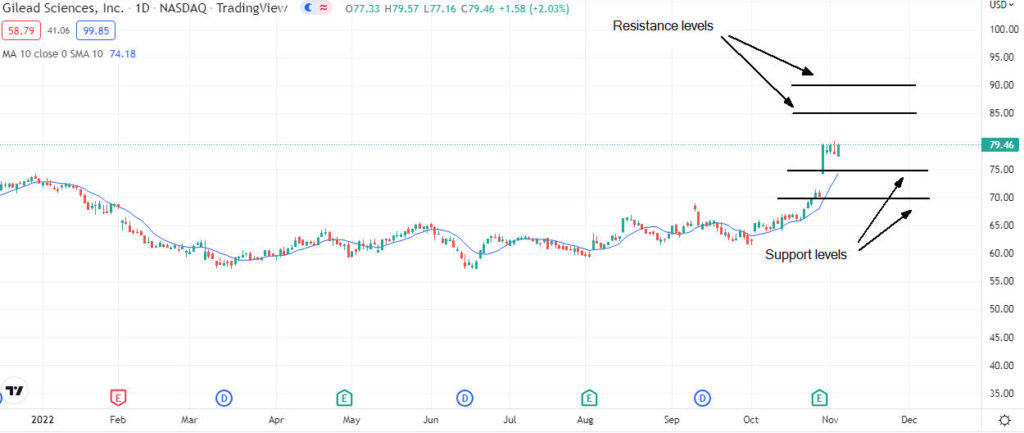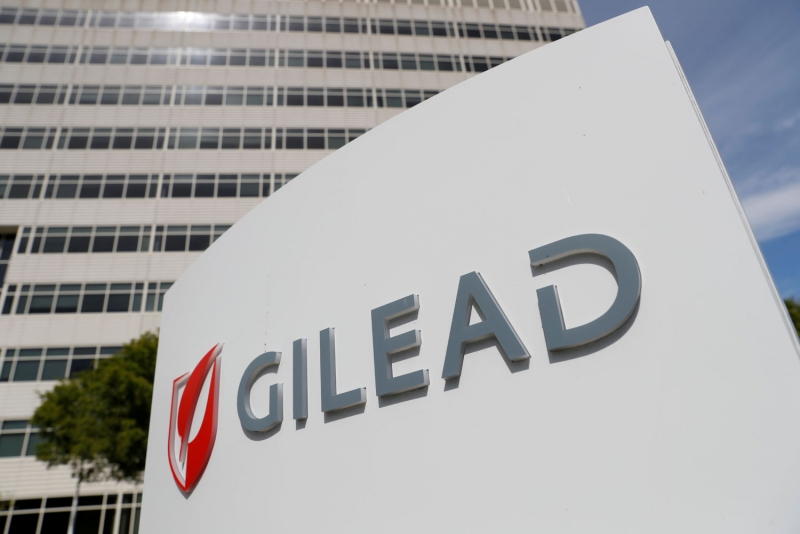Gilead Sciences, Inc. (NASDAQ: GILD) shares have advanced from $61.45 to $80 since the beginning of October 2022, and the current price stands at $79.46.
Gilead Sciences reported better-than-expected third-quarter results last week, and the company’s management updated financial guidance for the 2022 fiscal year.
Gilead Sciences reported better-than-expected Q3 results
Gilead Sciences is an American biopharmaceutical company that focuses on researching and developing antiviral drugs used to treat HIV, hepatitis B, hepatitis C, and influenza.
The company reported better-than-expected third-quarter results last week; total revenue has decreased by -5.1% Y/Y to $7.04 billion, while the non-GAAP earnings per share were $1.90 (beats by $0.47).
Gilead Sciences ended the quarter with approximately $4.7 billion in cash, which represents an increase of 8% from the year-ago period.
Total revenue has decreased less than expected (beats by $910 million), and it is important to mention that total product sales, excluding Veklury, increased 11% to $6.1 billion in the third quarter of 2022 compared to the same period in 2021.
Sale of its COVID-19 treatment Veklury played a significant role in the company’s business during the COVID-19 pandemic, but as we continue to see the lower rates of hospitalization for COVID-19, Veklury sales dropped 52% to $925 million in the third quarter.
The company’s management revised a full-year EPS to $3.35-$3.55 from $2.90-$3.30 and reported that total product sales should be between $22.5 billion to $22.8 billion, compared to $22.0 billion and $22.5 billion previously. Daniel O’Day, Chairman and CEO of Gilead Sciences said:
The consistent execution of our strategy, along with a very robust portfolio, has led to some terrific progress in 2022, and we look forward to building on that momentum through the rest of the year and beyond.
Fundamentally looking, Gilead remains well-positioned for future growth, but potential investors should keep in mind that at the current price, Gilead shares are not inexpensive.
With a market capitalization of $99.44 billion, Gilead is not undervalued and compared to Viatris Inc. (NASDAQ: VTRS), Gilead is more expensive on a price-to-sales basis.
According price-to-sales ratio (market capitalization/revenues), Viatris shares are trading at 0.72, which is several times lower than the price-to-sales ratio of Gilead Sciences, which is trading at a P/S of 3.66.
It is also important to mention that Pfizer Inc. (NYSE: PFE) trades at less than three this year’s sales and less than seven times TTM EBITDA.
Gilead trades at nearly eight times TTM EBITDA, which still remains attractive, but given the stock’s strong performance in the last several weeks, I would wait for lower price levels.
The U.S. central bank delivered a fourth straight 75-basis-point increase in its policy rate this Wednesday and signaled plans to push forward with the tightening cycle.
Fed Chair Jerome Powell said in a press conference that the Fed has more work to do, and if the U.S. stock market enters a more significant correction phase, Gilead’s share price could be at much lower levels.
Technical analysis
Gilead Sciences shares have been advancing last several weeks, and for now, “bulls” control the price movement.
The price has also moved above the 10-day moving average, which is certainly a positive sign; still, investors should keep in mind that at the current price, Gilead shares are not inexpensive.

The current support level stands at $75, while $85 represents the first resistance level. If the price falls below $75, it would be a “sell” signal, and we have the open way to $70 or even below.
On the other side, if the price jumps above $85, the next target could be $90.
Summary
Gilead Sciences reported better-than-expected third-quarter results last week, and the company’s management updated financial guidance for the 2022 fiscal year. Gilead Sciences shares have been advancing last several weeks, but investors should keep in mind that at the current price, Gilead shares are not inexpensive.
[ad_2]
Image and article originally from invezz.com. Read the original article here.

